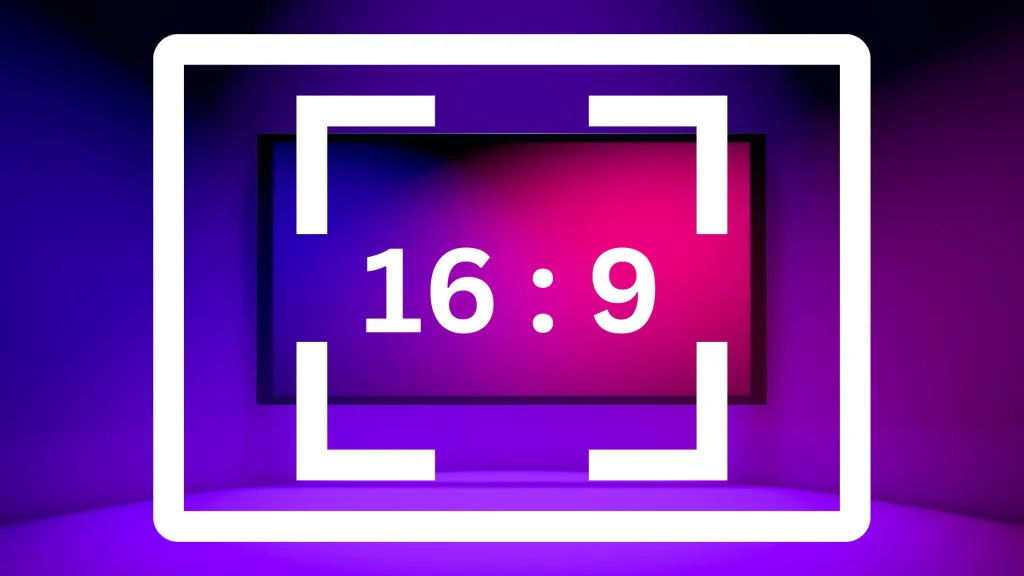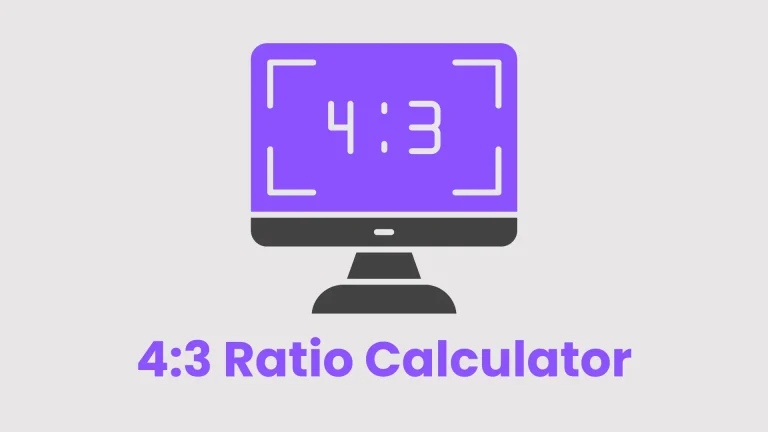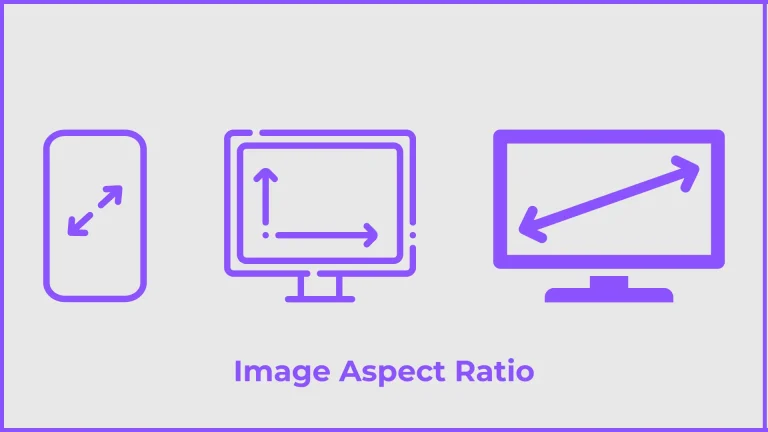Aspect Ratio
Aspect ratio refers to the ratio between width and height in an image or video. It is typically expressed as two numbers separated by a colon, e.g., 1.85:1 or 2.40:1.
Your screen ratio selection will enormously affect how audiences consume your film content and can even drastically alter its tone.
What is Aspect Ratio?
Aspect ratio refers to the proportions between width and height in photos or videos. It is usually represented as two numbers separated by a colon, such as 16:9. This number represents how horizontal dimensions Width (W) compare to vertical dimensions Height (H).
Screen ratio is essential for filmmakers and video creators working today because it impacts how their work looks on various screen sizes. When creating content for YouTube or social media channels like Vimeo or Vine, picture ratio must be considered to avoid distortion of the uploaded content. Furthermore, standard dimension ratio determines how much of an event or scene can be seen onscreen at one time and impacts how an audience will interpret viewing a film or video.

At one time, ratio calculator was determined solely by available technology; now, screen resolution and camera options provide creators with more choices than ever. Making the appropriate choice can dramatically impact a film’s look and feel while drawing viewers and creating viral buzz.
Selecting a video ratio for your film depends on its story and visual concept. A wider ratio may work best when depicting futuristic or sci-fi themes, while narrower ratios work best for dramas.
Aspect ratio is essential when designing websites as it dictates how the images and videos appear on a computer screen. An out-of-proportion image or video may distract visitors and even cause them to leave your site altogether.
Common Aspect Ratios
Filmmakers know that selecting an aspect ratio is a crucial decision that affects how they shoot and edit their videos, as well as the mood and viewer experience of their films.
Aspect ratio is the proportional relationship between width and height dimensions in an image or video frame. It can typically be expressed using two numbers separated by a colon; one number represents width, while the second represents height, for instance, 16:9.

Common aspect ratios include 4:3 (for television), widescreen 16:9, 1.85:1, and 2.40:1 cinematic standards, as well as 4.3 TV standards. Each has its own advantages and disadvantages, so finding the optimal option for any project depends on factors like content type, target platform, and viewer expectations of the final product.
Selecting a pic ratio that works for your video’s composition, lighting, and information delivery is critical to its success. While available technology in the past often determined this, today, there are more choices than ever regarding how and where videos are shot and displayed.
Knowledge of different aspect ratios available allows you to plan more strategically for the ideal venues and platforms where your videos will be shown—from mobile phones to theaters and televisions. Selecting an effective video ratio at the start of the filmmaking process will help in framing, shooting scenes, designing engaging titles/graphics/titles, and editing the finished product for maximum impact.
Common Aspect Ratios Used in Digital Media
Common aspect ratios used in photography, filmmaking, and digital media include:
16:9 (Widescreen): Widely used for modern HD and 4K video formats and for most computer monitors and widescreen TVs.
4:3 (Standard): Traditional screen proportion used in older TVs and computer monitors, as well as for some photography formats.
1:1: Commonly used in social media platforms like Instagram for square photo and video formats.
2.35:1 or 2.39:1 (Cinemascope): Popular cinematic display ratios for widescreen movies, offering a broader and more immersive viewing experience.
3:2: (Classic 35mm) is the standard aspect ratio for 35mm film photography and some digital cameras.
4:5 (Portrait): This vertical aspect ratio is often used for portrait photography, particularly on social media platforms like Instagram.
These aspect ratios are chosen based on the desired visual effect, medium, and target audience, each with aesthetic and practical considerations in photography and filmmaking.
Change Aspect Ratio
Video ratio refers to the relationship between a video’s width and height. This ratio determines how much information will fit within its frame and the shape its content takes; furthermore, it dictates how it is consumed and watched.
Filmmakers and video creators commonly rely on aspect ratio to define the shape of their videos and images. Different screens and cameras have various aspect ratios that they utilize when creating content. Knowing which ratios are more popular will assist creators with crafting relevant material in an optimal format.

Modern digital cameras often allow you to select an aspect ratio before shooting footage, giving you control over its capture in aspect ratio and black bars. Unfortunately, sometimes, this option is unavailable, and so post-processing software programs provide ways to change this aspect ratio in post.
Filmora is one of the most sought-after solutions. It enables users to change the aspect ratio of their footage quickly and effortlessly. Simply open the media panel on the left side of your screen.
Select your video’s desired resolution and press “OK.” You will immediately see its new aspect ratio displayed in the preview window. To test this change further, alter the frame dimensions.
The aspect ratio may seem like arcane data for filmmakers only, but its relevance in today’s digital era cannot be overstated. Selecting an optimal aspect ratio could dramatically impact how viewers respond to your video and its success or failure.
Computer Screens Sizes
Here are the five most popular computer screen sizes in pixels, along with their aspect ratios:
1920×1080 (16:9): The most common screen resolution is Full HD or 1080p. It’s used in many devices, from laptops to large desktop monitors.
1366×768 (16:9): This is a common screen resolution for laptops and smaller displays, also called HD or 720p.
2560×1440 (16:9): This resolution, known as WQHD or 1440p, is used in high-end displays like gaming and professional-grade monitors.
3840×2160 (16:9): Also known as Ultra HD or 4K resolution, this is used in top-tier displays like high-end gaming and professional-grade monitors.
1280×800 (16:10): This aspect ratio is often used for laptops, especially smaller ones and tablet displays.
Aspect Ratio & Black Bars
Aspect ratio refers to the proportion of width to height in an image or video, usually expressed as two numbers separated by a colon, traditionally written as W:H. The first movies were shot using 5:4 aspect ratio film, but as technology advanced and TVs became wider, this changed to 4:3 (now 16:9) for movie film. When an aspect ratio is mismatching with its screen size where it is being shown, black bars will appear along both edges of its frame, leaving sides cut off, as well as top and bottom black bars appearing along its sides – leaving large black bars at either side containing black bars on its edges – creating black bars on its sides as well.
This issue is common with older films and television shows still in circulation, but it can easily be remedied by changing the video format or finding ways to show them on widescreen TV without black bars. You could try using free programs like HandBrake to convert them to widescreen format without black bars or find websites that allow users to choose their screen size without showing only video without black bars.
Knowledge of aspect ratio can help you make more informed decisions when shooting videos and photographs and ensure they look their best when uploaded to YouTube or other social media platforms.



